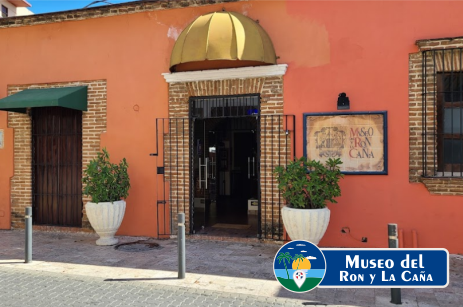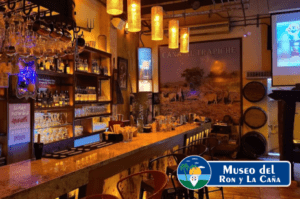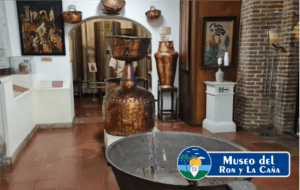
The Museum of Rum and Sugarcane is an interesting source of information on the history of the clothing that was used in colonial times to extract juice from sugar cane for processing Dominican rum.
The history of sugarcane began with the colonizers, when from the Canary Islands they brought the sugarcane plant, originally from India, on the second voyage of Christopher Columbus. This was in 1493.
The Dominican Rum Museum was created by the late rum master César García with the aim of filling a cultural void in society, so that people know about its roots, its history, what its emblematic points are, as is the case of the rum Currently, it is directed by his son José A. García.

This museum captivates and hypnotizes, and entering the different rooms of the museum is discovering an ancient world, where the history of cane and all the utensils that were used at the time to make this distillate stand out, such as the trapiche and the alembic, among others. In addition, visitors, both nationals and foreigners, will be able to acquire and taste the variety of rums that are manufactured there, some of them with fruit flavors.
The idea is that the Dominican people and our foreign visitors know how the cane industry began, what elements were used, how the cane or distillate industry has evolved in the production of alcohol”, said the chemical engineer Altagracia Carrasco, in charge of the Museum of Rum and Sugarcane.
With more than 12 years open to the public, the Rum Museum exhibits tools used in ancient times for the cultivation of sugar cane, such as the plow to plow the land, as well as the guinea pig, which was one of the first elements to extract the juice from the cane by pressure, dating back to 1800.

Also, there is the paila, which is where the “melao” was made to concentrate the sugars. Old wheelbarrow wheels are also exhibited, through which the raw materials from the cane farms, the distillation equipment, among many other pieces, were moved. Another of its attractions is a map that shows the second voyage of Christopher Columbus to the island in 1493, which is when he first brought the “zoca” or sugar cane root from the Canary Islands.
A bar remains inside the museum, which due to the pandemic remains closed. According to Carrasco, “depending on the behavior of the virus, we are studying the possibility of opening it.
The museum also exhibits pieces and cooperage tools, used to repair the barrels, as well as a photo gallery of the first rum makers in the country, among other attractions.
To find out about other interesting places in the Dominican Republic, click here!
How to get to the Museum of Rum and Sugarcane:
